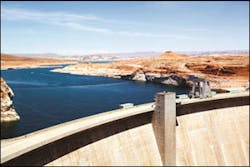Hydraulics 101 (for Those Who Skipped It in College)
At a loss when hydraulic engineers start throwing out fancy terms like unsteady flow, allowable shear stress, hydraulic radius, Manning’s “n”, or 100-year flood? As a professional working with these technical individuals and their reports, it’s essential that you fully understand “where they are coming from”.
Join two-time former IECA President, Dr. David T. Williams for the second part of ourSurface Water Master Class Series, a live and on-demand two-session webinar exploring the concepts, terms, and analyses behind hydraulics, and the basis of the analyses that goes into hydraulic studies. After covering the basics, we’ll follow-up with an exploration of advanced topics (e.g., hydraulic scour of structures, weirs, culverts, hydraulic grade control, and bank stabilization), as well as how this information is essential for good hydraulic design.
This webinar is scheduled live on 2 Sessions, April 12 & 14 @ 11:00am PDT / 2:00pm EDT, 1.5-2 hr*, 1-1.5hr.* Register for the event by clicking the button below.
- Apr. 12: Hydraulics 101, Part I
In this session, we’ll discuss the fundamentals of hydraulics, common terms and how they are used in river and erosion design, how particular hydraulic designs are determined, and how hydraulic engineers compute water surface elevations, water velocities, and shear stress. This course is designed for those who have not had formal training in hydraulics, and is designed to provide you with an understanding of the concepts of hydraulics as they are used in real-world applications that are relevant to rivers, streambank stability, and erosion control.
- Apr. 14: Hydraulics 101, Part II
In this session, we’ll move beyond the basics to advanced topics and how this information is used to develop information essential for hydraulic engineers to develop their designs. Advanced topics include: hydraulic scour of structures, weirs, culverts, hydraulic grade control, and bank stabilization using hydraulic information.
Miss a session? Not a problem! All live sessions are recorded and available on-demand to watch at your leisure.
Learning Objectives
Attendees can expect the discussion and education of the following learning objectives.
- Learn the fundamentals of hydraulics.
- Understand the meaning of hydraulic terms and how they are used in river and erosion design.
- How particular hydraulic designs are determined
- How hydraulic engineers compute water surface elevations, water velocities, and shear stress
- Learn how hydraulics is used for streambank protection.
- Understand the use of hydraulics in stream restoration.
- Learn how hydraulic structures are designed.
- Learn about the tools that hydraulic engineers use.
Date & Time:
April 12 & 14 @ 11:00am PDT / 2:00pm EDT, 1.5-2 hr*
Presenter: Dr. David T. Williams
Ph.D., P.E., PH, CFM, CPESC, D.WRE
DTW and Associates
1.5-2 hr*
Credits: 2 PDH / 0.2 CEUs
$149
